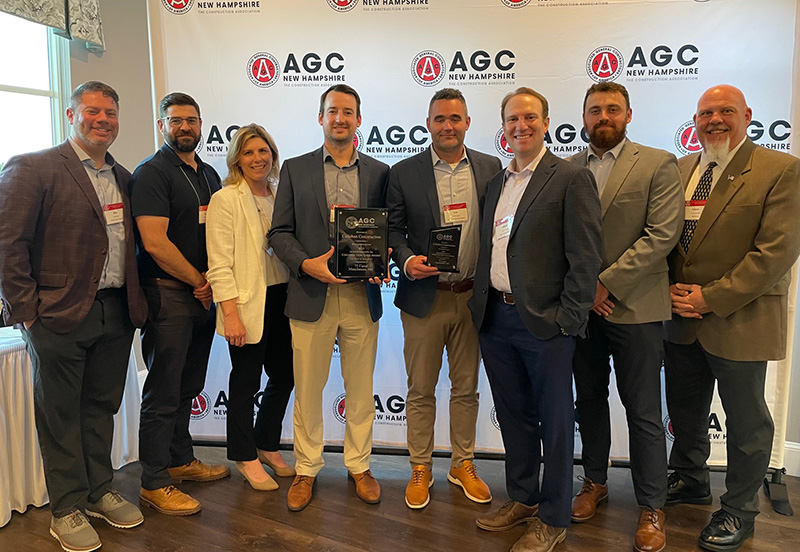News: Construction Design & Engineering
Posted: December 16, 2009
Reduce, reuse, remodel: Green remodeling solutions
Green is no longer just a color. We hear it everywhere: green cleaning, green cars, green buildings. Green has taken on many new meanings. What does this mean for remodelers?
Looking at the big picture, the facts are straight forward. We have a fixed amount of natural resources, a growing population and a changing natural environment. Approximately 40% of world energy use, material resource consumption, and green house gas emissions are a byproduct of building construction and operation. Building, by definition, is not green. Builders and remodelers, however, can significantly reduce a project's impact on the environment.
Green building is not about spending money on trendy "green" products. To reduce impact on the environment, remodelers must identify and incorporate practical green solutions and focus on proper design, non-destructive land use, material conservation, energy efficiency, construction of sustainable structures, and improved indoor air quality.
Proper Planning is Critical
Every successful green project starts in design. Without proper planning, opportunities to maximize dollars spent on efficiency improvements, advanced framing and proper product selections will be lost. Existing materials like cabinets, trim, and framing should be identified for reuse. If a product is salvageable but cannot be used on-site, it can be carefully deconstructed and donated to organizations like Habitat for Humanity. Finally, demolition materials should be recycled.
Focus on Energy Efficiency
Improvements to energy efficiency through weatherization upgrades allows remodelers to incorporate green principles in a financially justifiable manner. A home energy auditor can conduct a whole house systems analysis that identifies inadequacies in a structure's thermal envelope and mechanical systems. An energy audit should include blower door testing and infrared imaging which identify opportunities to improve air leakage, inadequate insulation levels and underperforming heating and ventilation systems.
Choose Products Wisely
With everyone jumping on the "green" bandwagon, it is critical that the remodeler identify characteristics of truly environmentally responsible products, which include:
* Products with recycled content.
* Local and minimally refined products that require nominal energy to harvest, create and transport.
* Wood certified by the Forest Stewardship Council (FSC), an internationally recognized organization that promotes responsible harvesting and management of the world's forests.
* Finishes, paints and building products that off gas little or no volatile organic compounds (VOCs). Many VOCs are known carcinogens and have significant effects on indoor air quality and occupant health.
The green building movement holds within it a profitable future for remodelers who explore building techniques and products that yield benefits for the client and our natural environment. As the green building market develops, phony green claims will be exposed, leaving the educated remodeler to pick up the pieces. Remodelers should be positioned to provide clients with options that make sense both environmentally and financially.
Matt Beaton, LEED AP, NARI GCP is the owner of Beaton Construction, Shrewsbury, Mass.
MORE FROM Construction Design & Engineering
Nobis Group awards Robinson and Moreira STEM scholarships
Concord, NH Nobis Group, a 100% employee-owned consulting firm specializing in engineering and environmental solutions across the Northeast, has named the recipients of its 2025 STEM Scholarship: Andie Moreira of

Columns and Thought Leadership

The design-build advantage: Integrated interior design solutions - by Parker Snyder
When it comes to corporate interior spaces for both commercial and industrial projects, partnering with a design-build firm with in-house interior design services can offer clients many benefits. Unlike traditional delivery methods where interior designers operate independently from the design and construction teams, often creating a longer project timeline as cost negotiations and revisions ensue

Careers in Construction Month focus on training and safety - by Joe Camilo
October is Careers in Construction Month, and rarely has it been more consequential. According to our chapter’s national parent organization, the construction industry needs to attract half-a-million new workers in the coming year to meet demand. Addressing that need is a huge job, but we at ABC MA are trying to do our part.

Ask the Electrician: Is summer a prime time for commercial electrical maintenance?
The answer is “Yes!” While January marks the official new year, many businesses view September as a fresh start. This makes summer an ideal time for commercial property owners to schedule long-term electrical maintenance projects.

The rise of incubators and co-working spaces: The latest in life sciences - by Matt Combs
In recent years, the life science industry has witnessed a shift in how companies operate and innovate. One of the key driving forces behind this transformation is the emergence of incubators and co-working spaces specifically tailored to meet the unique budget and schedule needs of startups.







